In this installment of “Fact or Fiction?“, we examine the validity of a proverb that claims morning rainbows are an indicator of bad weather to come. Read on to find out if this one holds up!
The odds are probably around 50/50 that you have heard this proverb before:
At first glance, it wants you to believe that if a rainbow is visible in the morning, bad weather is coming. Once again, there is some legitimacy here, but how applicable is this in the Front Range? First, let’s take a step back and examine how rainbows actually form:
- Rainbows are the result of sunlight refracting into and reflecting inside water droplets (see diagram below). It is similar to the way light can be “separated” into it’s colorful components using a prism. When direct sunlight first enters the water droplet, it separates into the colors, then reflecting once inside the droplet, then exiting. One droplet alone is not enough to produce a visible rainbow, but millions of droplets, which is typical beneath a rain cloud, is sufficient to create a rainbow!
- As a outcome of this geometric dependence, rainbows only form in a circle around the anti-solar point, which is just a fancy word for the point directly opposite the sun. As someone looking to observe a rainbow, you must have your back directly to the sun. The exact location of the anti-solar point is where the shadow of your head falls. This is the reason that rainbows are only visible in the morning and evening. During the rest of the day, the sun is too high in the sky and the anti-solar point is beneath you feet, in the ground.
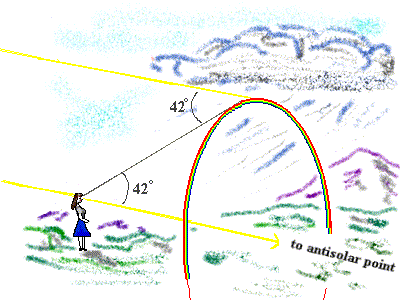
- The sunlight must be direct. The direction of the sunlight hitting the water drops must be uniform, so diffuse sunlight (i.e. the light coming through clouds or in shade), will not work.
- We normally only see the top half, or less, of the rainbow; the rest is hidden “beneath the ground.” It is possible to see more of a rainbow if you are higher up, say on a mountain, looking down. Even better, you can see an entire rainbow quite easily from an aircraft.
In order for a rainbow to form, there must be rain falling from a cloud. Relative to your position, that rain must be opposite the direction of the sun, and take place within several hours of sunrise and sunset. Furthermore, the sun must come out to shine direct light on that rain, so that clouds/rain must be spotty and scattered across the sky. Whew! With all those requirements, you begin to see why rainbows are relatively rare!
Returning to the proverb… A rainbow visible in the morning indicates that it is raining to your west, since the sun always rises to the east. Because weather generally progresses from west to east, the rain cloud that is producing the rainbow has a good chance to move towards your location next. It is as simple as that! Actually it is a bit more complicated, as the distance to the rainbow can vary, the movement of the storm may not be completely eastward, the sun is likely not directly to the east, etc. All that aside, this proverb is fairly applicable in most parts of the world, even our region!
However, there is a small caveat: weather in northeast Colorado is rarely able to support morning rainbows. Think about it: how often is there spotty precipitation near sunrise in the Denver Metro area?
We usually get our rain in one of two forms:
- Monsoon thunderstorms (June – September): The monsoon only supplies the moisture. Daytime heating must provide the energy to kick off these thunderstorms. As such, monsoon storms can only form in the afternoon and evening hours, and die out after sunset. Having one materialize in the morning is extremely rare. As a result, monsoon storms frequently produce rainbows near sunset, just after the rain has finished at your location. Not all that great for weather prediction right?
- Upslope events (March – May / September – October): When upslope occurs, it is usually uniform and widespread. It rarely leaves any clear sky, which means that there is no direct sunlight during the rain. Lacking this essential ingredient, upslope events don’t produce rainbows at all.
Morning rainbows are not unheard of in Boulder; they are just extremely rare. We estimate that 5% or less of our visible rainbows occur in the morning. The ones that do form are often in the summer, when a weak, upper-level disturbance moves through overnight, capitalizing on the monsoon moisture to provide some spotty showers or storms during the morning hours.
Next time you see a morning rainbow, know rain is headed your way. Oh, and while you’re at it, snap a photo! Who knows when you might see a pre-lunch rainbow again…
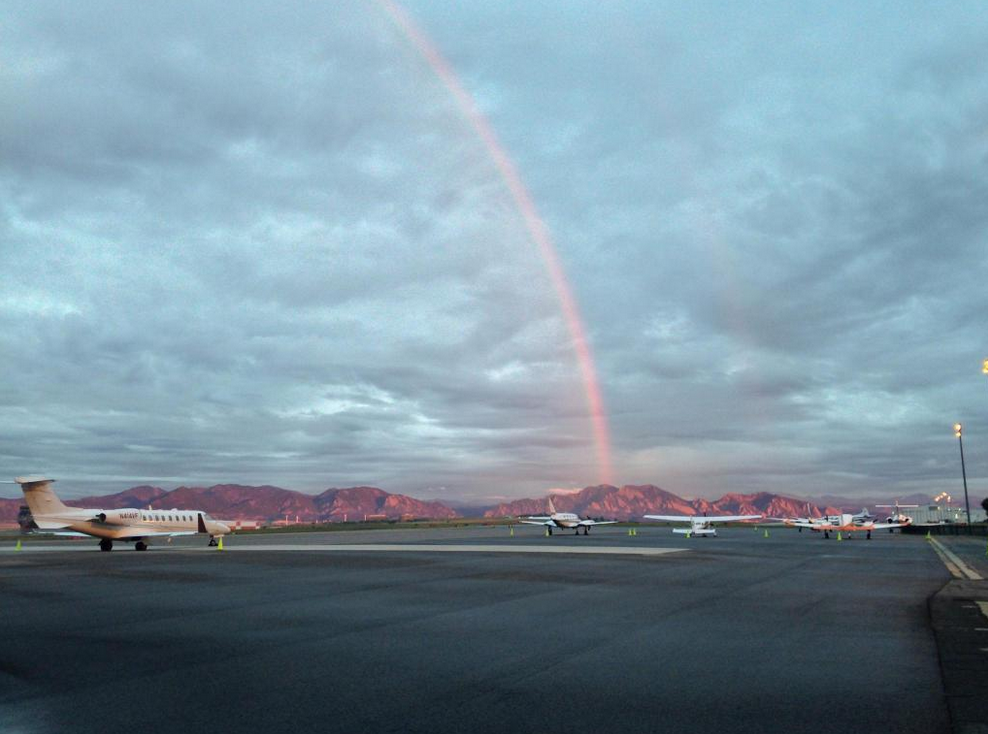
Morning Rainbow at Rocky Mountain Airport | July 2014 | Photo by: Cody Crouch

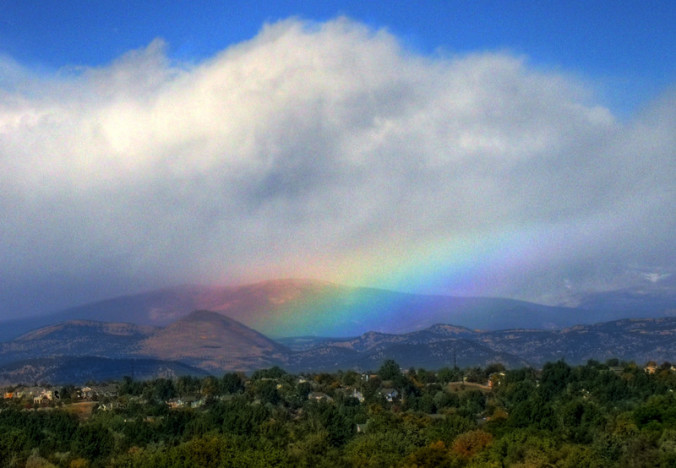
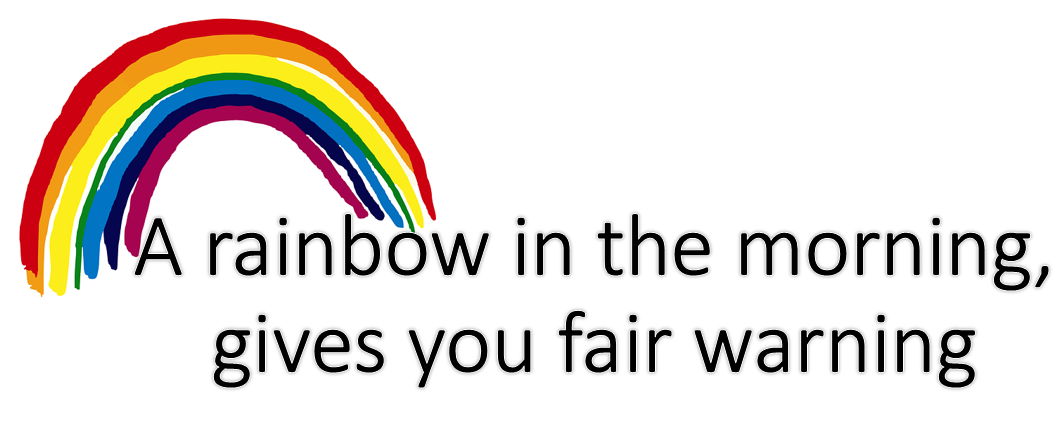
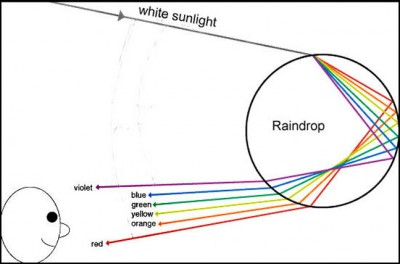
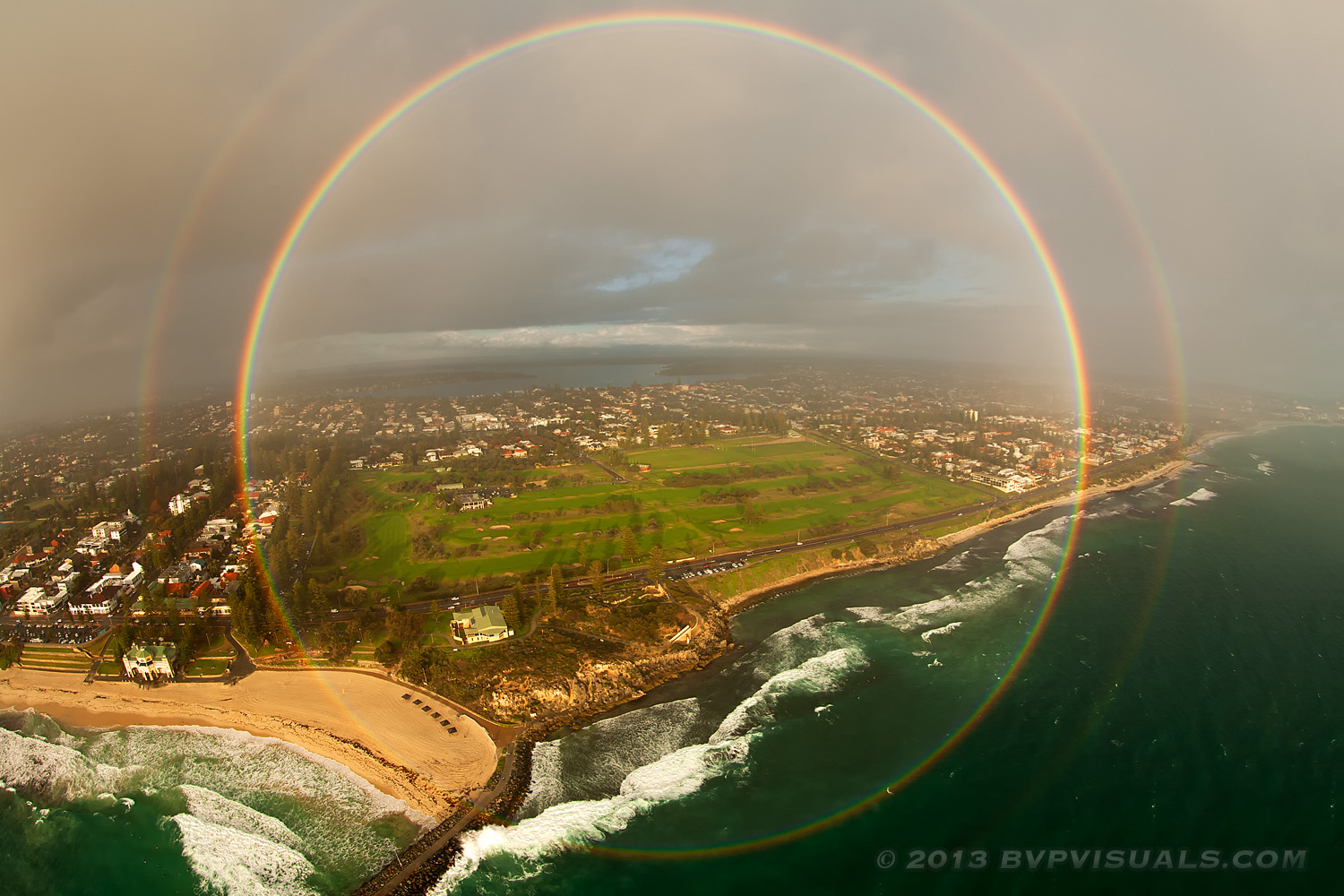
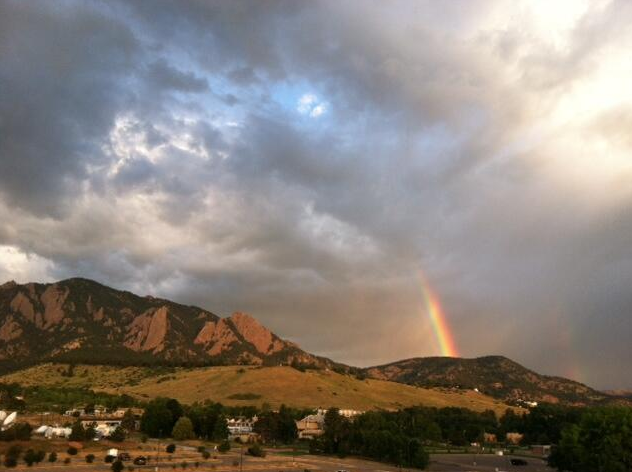






You must be logged in to post a comment.